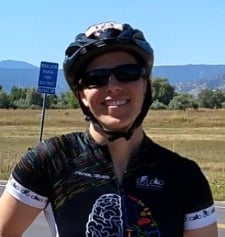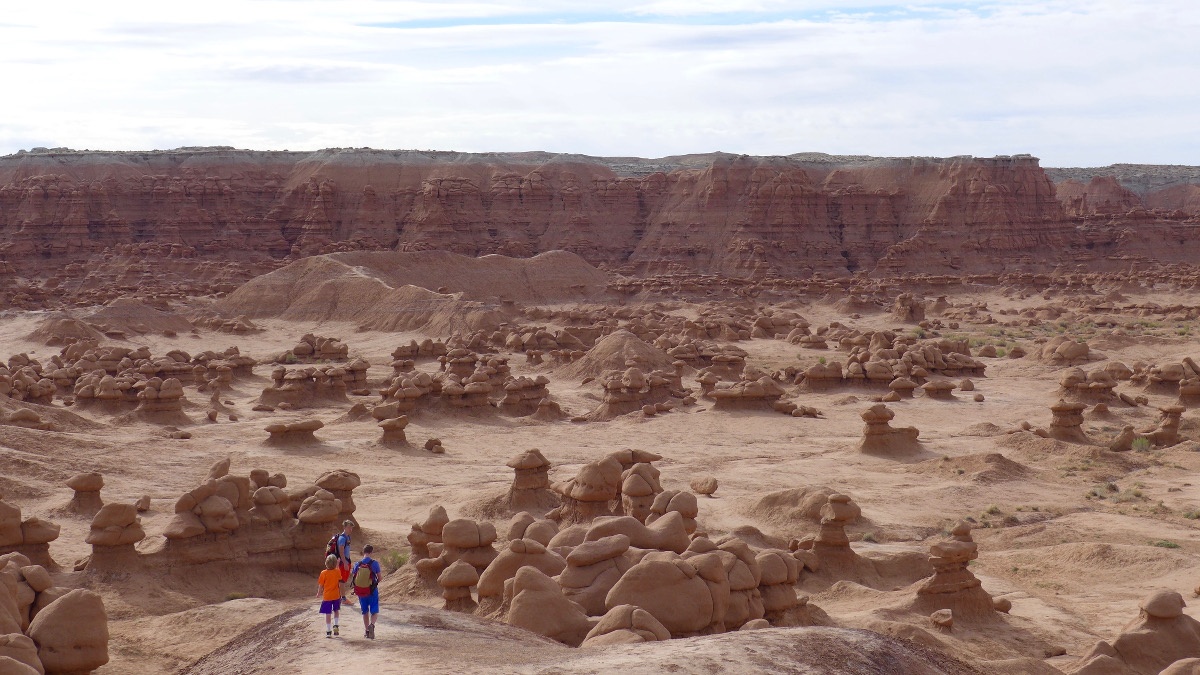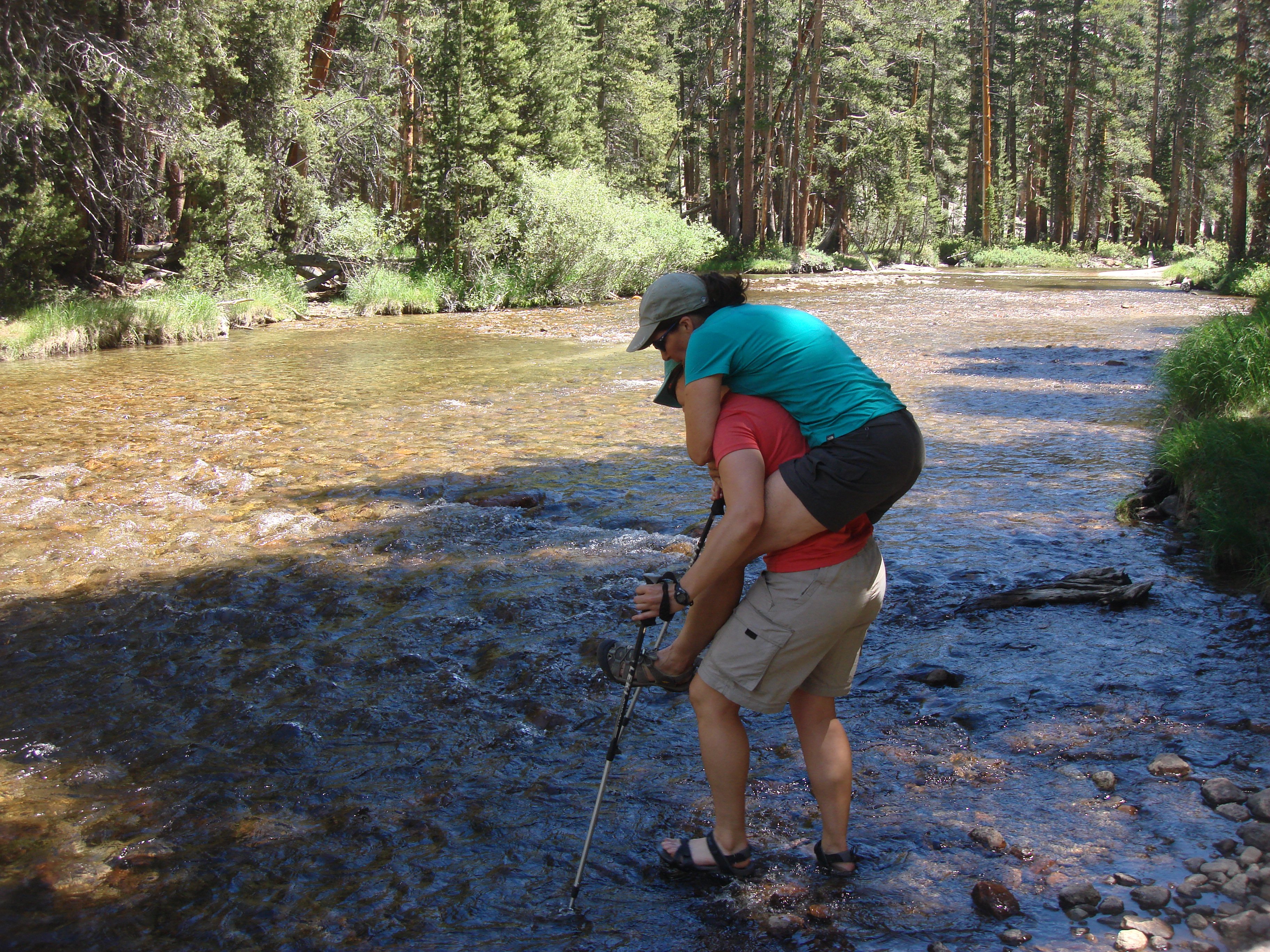
Preparing for Family Adventures
My mom and I go backpacking frequently in the Sierra Nevada Mountains. Our typical playground is the western Sierras between Yosemite and Kings Canyon, ranging from quick weekend to two-week trips. We’ve also section hiked the John Muir Trail and hiked rim-to-rim-to-rim in the Grand Canyon.
While hiking, we’re usually far from any emergency assistance. I’ve carried my mother across rivers on my back, cared for numerous blisters on her feet, helped her when she has lost her footing, and had my own share of backcountry medical needs. We decided to take the NOLS Wilderness First Aid (WFA) course together to feel more prepared for our adventures.
Taking the course with my mom made things much more realistic. For our large scenario, my mom and I were in the “injured-patient” group. My mom was instructed to distract responders by acting hysterical because her daughter was severely injured. She took the hypothetical situation to heart; she screamed for someone to help me, and even cried. In this scenario, she exemplified how bystanders’ emotions can interfere with proper patient care and how crucial it is for family members to remain composed, despite how worried they are about an injured loved one.
In the course, we learned how to size up a scene, address any life threats, carry out a head-to-toe physical assessment, take vital signs, ask the patient pertinent questions, and devise a plan for treatment. We also learned an invaluable lesson: there needs to be a point person to control the chaos in an emergency. After the course, I hoped applying these skills in real life would feel just like a scenario.
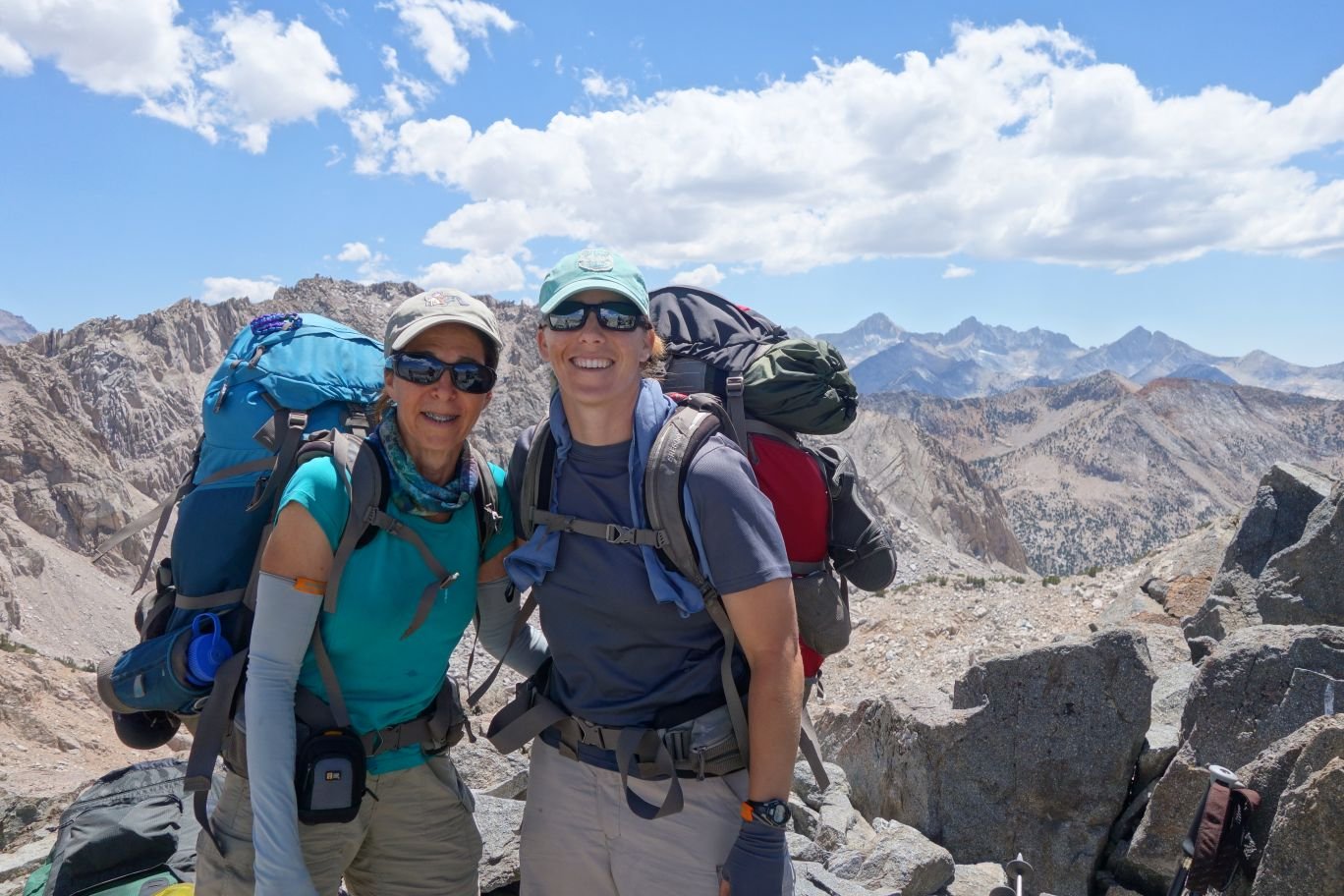
Unexpectedly Taking Action
My twin brother, Cory, and I went on a weekend camping trip along the Colorado River in southern California, a family tradition. We had 20–30 people in our group, ranging from 6 months old to 65 years old. We’d been jumping and diving off a dock into the river all weekend to cool off. The river was swift and gets deep quickly, but we would soon learn that it was not deep enough.
Cory’s final dive took him straight down where he hit the river bottom directly with his head. He remained conscious, but realized he couldn't move. He held his breath and hoped someone would see him. A cousin, standing on the dock, noticed blood in the water and yelled for help. I thought she was yelling about the wakeboarder who had wiped out down the river, but then I saw three family members run into the water looking for someone. The next thing I saw was someone bringing Cory out of the water, collapsed in their arms.
I immediately started to freak out, cry, and ask, “Is he breathing?” I ran to where they fished him out—a rocky, sloped boat ramp in the 100º F sun. When I saw his limp body with blood dripping from his head, I knew he was at risk of a spinal cord injury. Once I got to Cory, I gained composure and stabilized his neck, which crunched in my hands.
It all happened so quickly. I’m not sure how I calmed myself, but I knew my composure was crucial for my brother’s care. During the NOLS course, I was chosen to stabilize the neck and lead lifting the patient for the spinal injury scenario. Now, I did just that in real life, as if it were muscle memory.
Cory’s first words when we pulled him out of the water were “thank you,” and from then until paramedics arrived, he kept repeating “I’m so sorry, I’m so sorry.” A few people wanted to move him, but that’s when I told everyone to pause. He needed to be lifted properly, and I would lead. I remembered that the person holding the head is the point person for communication and everyone must move on their command. I instructed the others to make a zipper line with their hands, and move on my count. Simultaneously, another cousin called 911.
We lifted Cory from the unprotected, rocky-sloped boat ramp to shaded, grassy, flat ground. From the course, I knew moving Cory to a safe, comfortable, cool-temperature area was essential for his care. I continued to stabilize his spine for the next 30 minutes. I had someone cover my back and legs with a towel, knowing that I had to protect myself from the sun in order to help Cory. Two cousins with medical training monitored Cory’s vitals and also instructed others how to help. We remained on the phone with 911 and continually updated them with information.
Cory was conscious, aware, and talking with us the entire time. He was amazingly calm, given the circumstances, which also helped everyone else keep calm. During the head-to-toe, Cory complained of extreme pain when someone touched his neck and shoulders. He couldn’t move or feel any sensations at or below his chest. His breathing was labored.
The paramedics arrived on scene, introduced themselves, and conducted their own assessments. I held Cory’s neck until they put on the cervical collar and backboard and arranged for ambulance and helicopter transport.
I believe going through the NOLS WFA was key to help me step up, keep calm, and provide aid to my brother. Without the training, I don’t know what I would’ve done.
A New Normal
Cory spent three weeks in the ICU in Palm Springs, California. He fractured every cervical vertebrae and had surgery to fuse his neck from the base of his skull (Occiput) to T1; his neck is completely fused. Cory’s injury is classified as a C3 incomplete spinal cord injury and has quadriplegia. He has some arm movement, no hand or leg function, and little sensation below the chest.
Life as Cory knew it was forever changed. It has changed for all of us. After months at different treatment and rehabilitation centers, he came home in early October and is still trying to grapple with this new reality.
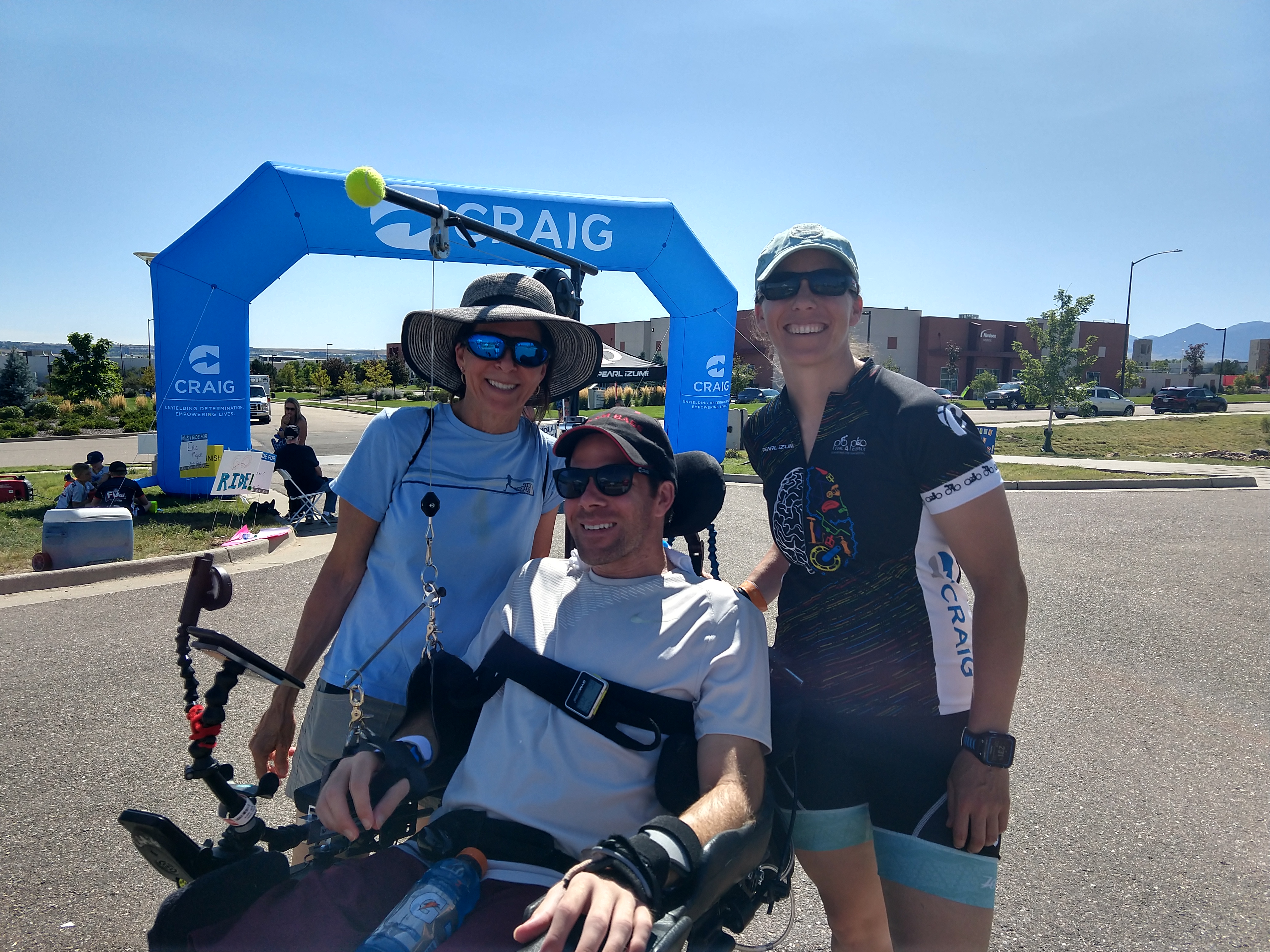
When I took the WFA course with my mom, I thought I was learning skills I would only use for a blister or a sprained ankle. Without my NOLS course, I wouldn’t have had the knowledge necessary for addressing my brother’s injury. Likewise, I learned that it’s important to stop and evaluate the situation before reacting. Knowing what to do provided me with the confidence needed to assume a leadership role, directing bystanders with a calm demeanor. The NOLS course and knowledge gained was priceless in helping prevent my brother from suffering additional injuries.
More of our story can be found here: https://www.caringbridge.org/visit/corygoral
- First Aid
- Wilderness First Aid
- Wilderness Medicine
- Stories
- Student Stories
- Illness & Injuries
- Wilderness Medicine Stories
Written By
Audrey Goral
Audrey Goral is a NOLS Wilderness Medicine graduate who earned her WFA certification in 2018. She is a backpacker and cyclist.


